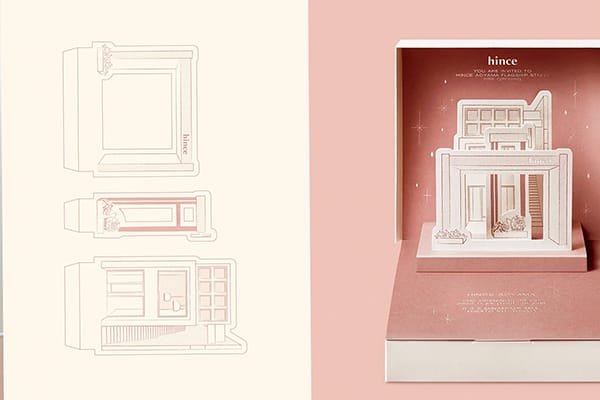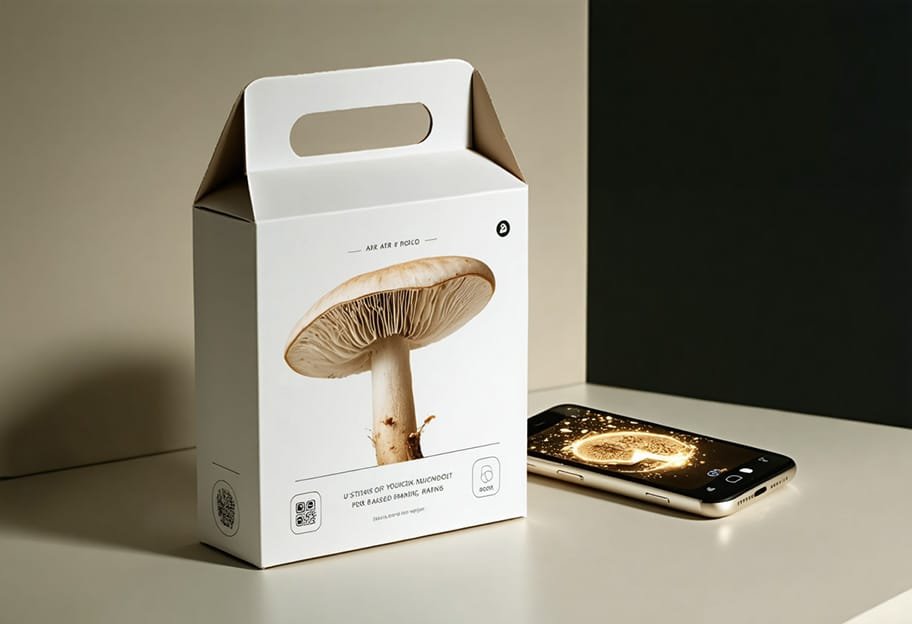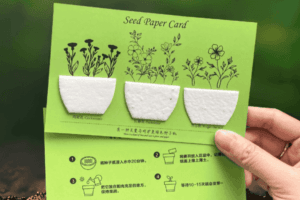
I remember standing in a small workshop in China, watching artisans fold paper into intricate shapes. It struck me: packaging isn’t just a container. It’s a quiet storyteller, whispering messages long before anyone opens the box.
Packaging design isn’t merely about wrapping things up. It’s about creating a subtle conversation with customers, reflecting your brand’s personality, and showing care before anyone even tries the product. Thoughtful packaging elevates perceived value, sparks curiosity, and builds trust. It can make buyers feel understood, respected, and eager to return.
Let’s step inside the world of packaging and find simple ways to make it feel like a personal handshake.
What is Packaging Design?
I’ve learned that packaging design goes beyond ink and cardboard. It’s a layered experience—color choices, textures, tiny details that signal authenticity and commitment to quality.
Packaging design means choosing colors, materials, and shapes that mirror the brand’s soul. Imagine a box that gently cradles fine jewelry, or a sleeve that makes someone smile the moment they slide it off. Great packaging goes beyond plain protection—it sets a mood, builds trust, and hints at the story behind your product.

Back when I first worked with clients looking for unique packaging—like our 3D pop-up gift boxes for luxury items—I realized something: most people think a box is just a box. But what if we picture it like a stage set? The product is the star, sure, but the packaging’s role is to set the scene, guide the mood, and make customers lean in with delight.
The Layers of Communication
A great package design might start with simple elements—colors that hint at heritage, a texture that feels reassuring to the touch. For example, if Mark (a buyer in Korea) sources gift boxes from our factory, I know he values both quality and subtlety. So, I might suggest muted tones that convey elegance, perhaps a gentle embossing of his brand’s logo that his clients notice as they slide off the lid. This isn’t just about appearances; it’s a signal that Mark respects their taste and will meet their expectations.
Elements That Speak Volumes
- Color and Texture: Deep blues suggest trust, while soft satins whisper elegance.
- Shape and Structure: A solid, well-fitted box implies reliability.
- Branding Details: A subtle logo embossing can tell your buyer they’re dealing with professionals.
| Element | Impact on Perception |
|---|
| Kleurenpalet | Sets emotional tone |
| Materiaal | Suggests quality, durability |
| Logo Placement | Reinforces brand identity |
If you think about it, packaging design is like the front porch of a house: it sets the tone before you step inside. And when done right, it’s the kind of porch that makes you feel welcome even if you’ve never been there before.
How to pick the best packaging for your product
A snug fit and a style that mirrors your brand—that’s the sweet spot.
When choosing packaging, consider what your customers treasure most. If they value quality, choose strong materials. If they love elegance, go for unique shapes and custom logos. Think about where they live, what they do, and why they buy from you. Packaging that respects their time, culture, and aesthetic tastes leaves them feeling understood.

I’ve worked with buyers who source from all over, I’ve learned that the “best” packaging depends on understanding product’s journey. Will it sit in a store window or ship directly to customers? Knowing these details helps you choose materials that are both durable and appealing.
Factors to Weigh
- Material Strength: Tough enough to survive global shipping.
- Cultural Aesthetics: Adapting to local styles—understanding that gold foil might be classy in one design and flashy in another.
- Budget and Volume: Balancing cost and branding. Wholesale suppliers at HiPack often scale designs for better pricing.
Practical Examples
For a luxury jewelry piece: a reinforced box with soft interior and subtle branding. For bulk items: lightweight but sturdy packaging that won’t break the bank. By tuning into your product’s life cycle and your customers’ tastes, you give them something that feels tailor-made.
| Product Type | Recommended Packaging |
|---|
| Fine Jewelry | Rigid box, velvet tray |
| Gift Boxes (Volume) | Sturdy cardboard, logo |
| B2B Wholesale Orders | Stackable, eco-friendly |
That moment when a customer opens a box and smiles—that’s when you know you picked the right package.
What should you consider before you start designing your packaging?
Before diving into a design, think about your [timelines]https://filestage.io/blog/packaging-design-process/)[^4], your quality benchmarks, and how you’ll handle unexpected delays. Trust me, it can save a lot of headaches later.
Before starting, clarify your manufacturing capacity, lead times, and logistics. Check supplier credibility, verify certifications, and ensure communication channels are smooth—no more chasing suppliers who vanish mid-process. Keep realistic goals for production and delivery, because rushed jobs often lead to mistakes. Taking a careful, measured approach helps guarantee consistent quality and timely arrivals.

I remember one of my earliest clients who rushed into production, only to discover halfway through that the chosen material was out of stock. That kind of panic can ripple through your entire supply chain—delayed shipments, unhappy clients, and lost sales. So, planning before designing is like setting the stage properly so the show can run without hiccups.
Verify Certifications and Trust
Quality certifications are a big deal. Some suppliers cut corners, forging documents to look good on paper. Before starting your design, ask for verifications. Honest suppliers will be open, and seeing genuine documents can set your mind at ease. Mark’s customers expect authenticity, so ensuring supply chain integrity safeguards his reputation.
Communication Matters
Language barriers or cultural differences can cause misunderstandings. I’ve learned to slow down, ask clarifying questions, and confirm details in writing. It’s about being patient and establishing a mutual understanding so small details don’t get lost. Proper planning before starting design ensures a smoother path ahead, letting you focus on creative flair without unplanned chaos.
Testing Your Packaging
Before committing to a design, do a few test shipments. Check if boxes survive rough handling. Is the logo intact? Is the content protected?
| Tip | Benefit |
|---|
| Use Reinforced Corners | Prevents crushing |
| Moisture-Resistant Coating | Safe in humid environments |
| Internal Cushions | Protects delicate products |
When your brand’s story, personality, and promise all come together on the package, it’s no longer just a box—it’s a memory waiting to happen.
How to use sensory elements in packaging
Appeal to more senses than just sight.
Sensory packaging means using texture, scent, or sound to enrich the experience. Imagine the gentle rustle of tissue paper, a pop up elements when the box opens, or a silky ribbon that feels special to the touch. These elements can stir emotions, making the product feel more meaningful.

I’ve seen customers light up when they open a box with popup design—like 3D paper castle inside.
Choosing the Right Senses
- Touch: Soft fabrics, raised textures.
- Scent: A hint of freshness, not overwhelming.
- Sound: The crisp tear of a seal that suggests authenticity.
Crafting a Memorable Unboxing
When multiple senses collaborate, the unboxing becomes an experience. It gives the customer something to remember and talk about, building word-of-mouth marketing.
A sensory detail can turn a simple package into a personal gift, making customers feel both valued and delighted.
Innovative trends in product packaging
From eco-conscious materials like mushroom-based packaging to innovative AR features that allow customers to engage with your product’s journey, we’re staying ahead of the curve at HiPack. Imagine your customers unlocking a story about how their product was made—creating a deeper emotional connection with your brand.
Innovations in packaging aren’t just flashy—sometimes they’re about function, sustainability, or a unique reveal. From QR codes that tell a product’s backstory to materials that change color with temperature, these trends keep customers curious and engaged.

I recall when we added a simple AR code to a box, letting customers “unlock” a video of how their jewelry was made. It brought the manufacturing story to life. Mark, consider how technology can bridge that gap between you and your customers, even if you’re selling through distributors.
Technology Meets Tradition
A Playground for Creativity
Innovation isn’t about being trendy for its own sake. It’s about serving your customers better—making them smile, trust, and remember.
As we move forward, packaging doesn’t just hold products—it holds stories, possibilities, and relationships.
What are the final thoughts?
When I think about all this, it’s clear packaging isn’t an afterthought. It’s a subtle, welcoming handshake between brand and buyer.
Final thoughts: Packaging is more than materials and logos. It’s about capturing the spirit of your brand and connecting with people who appreciate that effort. By planning, choosing quality materials, seeking inspiration from unexpected places, and crafting a memorable unboxing journey, you create experiences customers genuinely look forward to. And that’s something worth cherishing.

I often think about the evolution of my own perspective. At first, I saw packaging as a protective shell—now I see it as a conversation starter. Every box, bag, or wrap we create at HiPack it isn’t just something functional. It’s a chance to show empathy, respect, and understanding.
Reflecting on the Journey
The journey begins with clear goals and honest communication. We trust each other enough to discuss timelines, verify certifications, and ensure customer can confidently explain these details to his buyers. By carefully choosing materials and designs, we’re not just hitting a price point—we’re crafting an experience that supports Mark’s brand story in Canada.
Continuous Learning
Even after settling on a design, we stay open to feedback. Maybe a certain color didn’t pop as intended, or the cushioning inside needed adjustment. These tweaks don’t signal failure. They show we’re human, we listen, and we learn. It’s like nurturing a relationship—small improvements over time lead to stronger bonds.
Encouraging Imagination
Ultimately, packaging is a canvas. Whether it’s subtle minimalism or vibrant artistry, it can make customers smile, feel curious, or even reminisce about a distant memory. When you approach packaging design as a human-to-human interaction, it sheds its mechanical feel. Instead, it becomes a shared story that both sides want to tell and retell.
| Element | Human Touch Example | Result |
|---|
| Communicatie | Prompt responses, clarifications | Builds trust and reduces confusion |
| Materialen | Thoughtful, eco-friendly choices | Aligns with buyer values |
| Aanpassing | Personal notes, subtle branding | Makes buyers feel valued |
| Consistency & Care | Strict QC, reliable shipping | Sustains reputation and loyalty |
From these final reflections, I realize that each detail, each choice, is an opportunity. Packaging can breathe life into products and become a subtle ambassador of your brand’s heart.
Conclusie
Remember, packaging isn’t just about protecting your product—it’s the first conversation you have with your customers. Whether you’re starting from scratch or looking to refresh your design, at HiPack, we’re here to help you tell your brand’s story in the most meaningful way.











